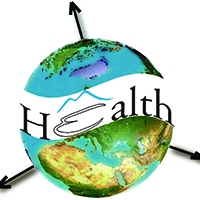Does the Geohealth domain require a body of knowledge?

Published: 29 November 2022
Abstract Views: 1381
PDF: 531
HTML: 21
HTML: 21
Publisher's note
All claims expressed in this article are solely those of the authors and do not necessarily represent those of their affiliated organizations, or those of the publisher, the editors and the reviewers. Any product that may be evaluated in this article or claim that may be made by its manufacturer is not guaranteed or endorsed by the publisher.
All claims expressed in this article are solely those of the authors and do not necessarily represent those of their affiliated organizations, or those of the publisher, the editors and the reviewers. Any product that may be evaluated in this article or claim that may be made by its manufacturer is not guaranteed or endorsed by the publisher.
Similar Articles
- Farrah Fahdhienie, Frans Yosep Sitepu, Elpiani Br Depari, Tuberculosis in Aceh Province, Indonesia: a spatial epidemiological study covering the period 2019–2021 , Geospatial Health: Vol. 19 No. 2 (2024)
- Susan Maroney, MaryJane McCool-Eye, Andrew Fox, Christopher Burdett, Using object-based image analysis to map commercial poultry operations from high resolution imagery to support animal health outbreaks and events , Geospatial Health: Vol. 15 No. 2 (2020)
- Akihiko Michimi, Michael C. Wimberly, The food environment and adult obesity in US metropolitan areas , Geospatial Health: Vol. 10 No. 2 (2015)
- Jonathan Cinnamon, Claus Rinner, Michael D. Cusimano, Sean Marshall, Tsegaye Bekele, Tony Hernandez, Richard H. Glazier, Mary L. Chipman, Evaluating web-based static, animated and interactive maps for injury prevention , Geospatial Health: Vol. 4 No. 1 (2009)
- Ciro José Jardim de Figueiredo, Caroline Maria de Miranda Mota, Amanda Gadelha Ferreira Rosa, Arthur Pimentel Gomes de Souza, Simone Maria da Silva Lima, Vulnerability to COVID-19 in Pernambuco, Brazil: A geospatial evaluation supported by multiple-criteria decision aid methodology , Geospatial Health: Vol. 17 No. s1 (2022): Special issue on COVID-19
- Ying Wang, Yongli Yang, Xuezhong Shi, Saicai Mao, Nian Shi, Xiaoqing Hui, The spatial distribution pattern of human immunodeficiency virus/acquired immune deficiency syndrome in China , Geospatial Health: Vol. 11 No. 2 (2016)
- Kyungsoo Han, Sejin Park, Jürgen Symanzik, Sookhee Choi, Jeongyong Ahn, Trends in obesity at the national and local level among South Korean adolescents , Geospatial Health: Vol. 11 No. 2 (2016)
- Gianluca Boo, Stefan Leyk, Sara Irina Fabrikant, Andreas Pospischil, Ramona Graf, Assessing effects of structural zeros on models of canine cancer incidence: a case study of the Swiss Canine Cancer Registry , Geospatial Health: Vol. 12 No. 1 (2017)
- Carlos Mena, Cesar Sepúlveda, Eduardo Fuentes, Yony Ormazábal, Iván Palomo, Spatial analysis for the epidemiological study of cardiovascular diseases: A systematic literature search , Geospatial Health: Vol. 13 No. 1 (2018)
- Sun-Bi Um, Jung-Sup Um, Metropolitan urban hotspots of chronic sleep deprivation: evidence from a community health survey in Gyeongbuk Province, South Korea , Geospatial Health: Vol. 10 No. 2 (2015)
<< < 1 2 3 4 5 6 7 8 9 10 > >>
You may also start an advanced similarity search for this article.

 https://doi.org/10.4081/gh.2022.1171
https://doi.org/10.4081/gh.2022.1171








